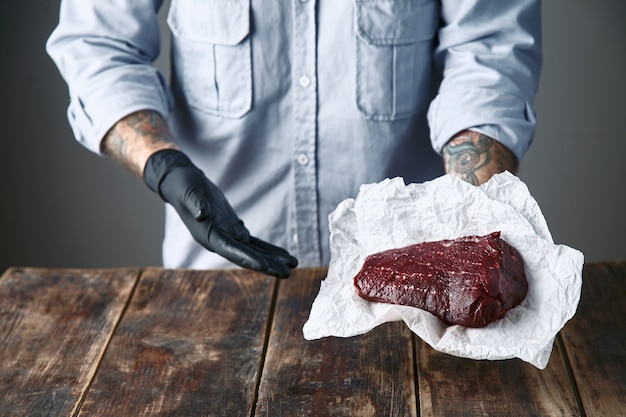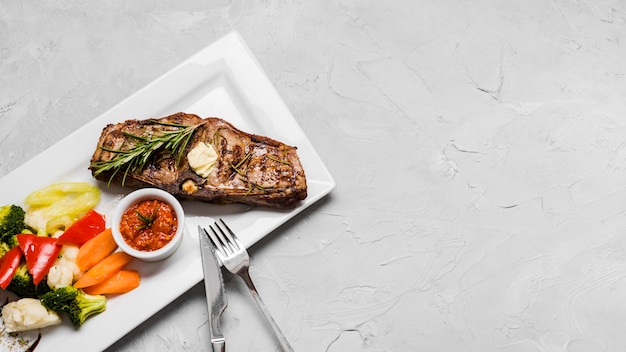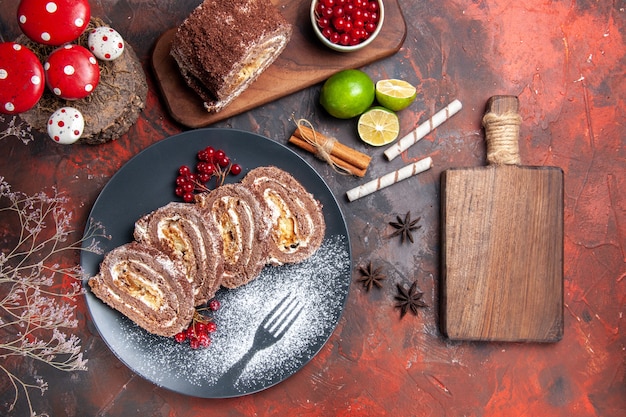Let's talk about top sirloin filet, a cut that often gets overshadowed but deserves a place of honour on any dinner table. It’s a real workhorse, tender, juicy, packed with flavour, and generally easier on the wallet than its fancier cousin, the tenderloin. This guide is like a culinary adventure, and I'm your personal tour guide, sharing all the secrets I've learned about cooking top sirloin filet to perfection – from picking the perfect cut to mastering different cooking methods. Grab a glass of something nice, settle in, and let's get cooking!
(Part 1) Choosing the Perfect Cut: The Foundation of Great Steak

Why Quality Matters: A Culinary Truth
You can't expect a masterpiece from a mediocre piece of meat. Choosing the right top sirloin filet is crucial. It’s not about the most expensive cut, but one that's well-marbled, like a beautiful mosaic of fat and lean, and has a good fat cap. The marbling adds flavour and moisture, while the fat cap helps keep the steak juicy during cooking. It's like a culinary insurance policy against a dry, disappointing steak.
Your Butcher is Your Ally: A Culinary Partnership
Over the years, I've learned that a good butcher is your best friend in the kitchen. They're the experts, knowing their meat inside and out. Don't hesitate to ask questions. They're there to help you find the perfect cut for your needs, and their knowledge is a treasure trove of tips and tricks.
Spotting the perfect top sirloin filet: A Guide to Choosing Wisely
Here's what to look for when selecting a top sirloin filet:
- A Vibrant Hue: A bright red colour is a sign of freshness. It's like seeing the lifeblood of the animal shining through the meat.
- A Firm Touch: A well-marbled steak should feel firm and springy to the touch. Imagine pressing on a bouncy castle – that's the kind of firmness you want.
- Marbling Like a Masterpiece: Look for even, white streaks of fat throughout the muscle. Think of it as a beautiful, edible tapestry woven with lean and fat.
- The Importance of a Fat Cap: A good fat cap is crucial. It's a natural barrier against dryness, keeping the steak moist and flavorful as it cooks. Think of it as a protective shield for your steak's juicy insides.
(Part 2) Prepping for Perfection: Setting the Stage for a Delicious Steak

The Fat Cap: A Friend with Benefits
You might think the entire fat cap is a necessity, but it's not. I like to trim off some of the excess fat, leaving a thin layer to protect the steak from drying out. Think of it as a strategic trimming, not a total removal.
Salt: The Magic Ingredient
Salt is the unsung hero of steak cooking. It not only enhances flavour but also helps tenderise the meat. Season generously with salt at least 30 minutes before cooking. This allows the salt to penetrate the meat and draw out moisture, resulting in a more tender and flavorful steak. It's like giving the steak a little spa treatment before the main event.
Pepper: A Late Arrival
Hold off on the pepper. We'll add it just before cooking, ensuring a fresh, peppery flavour that doesn't get overpowered by the heat.
Room Temperature: The Goldilocks of Steak
Cooking a steak straight from the fridge is a culinary crime. Allow the steak to come to room temperature for about 30 minutes before cooking. This ensures that the steak cooks evenly, without those pesky cold spots. It’s like giving the steak a chance to adjust to the warmth of the kitchen before its culinary transformation.
(Part 3) Mastering the Art of Searing: The Foundation of a Delicious Crust

A Hot Pan: Your Weapon of Choice
The key to a perfect sear is a screaming hot pan. Get your pan blazing hot before adding the steak. This creates that beautiful, golden-brown crust, like a protective armour for the juicy meat inside. A little oil, just enough to coat the bottom of the pan, is all you need to get started.
The Technique: A Culinary Dance
Place the steak in the hot pan and leave it undisturbed for 2-3 minutes. This allows the bottom of the steak to develop a beautiful crust. Then, use tongs to flip the steak and sear the other side for another 2-3 minutes. Repeat this process for each side, creating a crust all around. Think of it as a culinary dance, where you're gently moving the steak around the pan to achieve the perfect sear.
Don't Crowd the Pan: A Matter of Space
Resist the urge to overcrowd the pan. Too much meat in the pan will lower the temperature, preventing that perfect sear. If you're cooking more than one steak, cook them in batches to ensure that each steak gets the proper attention and develops a beautiful crust.
(Part 4) The Finishing Touch: The Oven's Gentle Embrace
Maintaining the Perfect Doneness: A Balancing Act
After you've achieved a beautiful sear on all sides, transfer the steak to a preheated oven for the final cook. This ensures that the steak cooks evenly without overcooking the outside. I usually bake my top sirloin filets in a 350-degree F (175-degree C) oven until they reach my desired doneness. It's like a gentle embrace, allowing the steak to cook through without drying out.
The meat thermometer: Your Culinary Compass
To achieve the perfect doneness, you need to rely on a trusty meat thermometer. There's no room for guesswork here. Here's a handy table that shows the recommended internal temperature for different levels of doneness:
| Doneness | Internal Temperature (°F) | Internal Temperature (°C) |
|---|---|---|
| Rare | 125-130 | 52-54 |
| Medium-Rare | 130-135 | 54-57 |
| Medium | 140-145 | 60-63 |
| Medium-Well | 150-155 | 65-68 |
| Well Done | 160-165 | 71-74 |
Resting: The Final Act
Once your steak reaches your desired doneness, take it out of the oven and let it rest for 5-10 minutes before slicing. This allows the juices to redistribute throughout the steak, resulting in a more tender and flavorful piece of meat. Think of it as a culinary timeout, allowing the steak to recover and relax before the grand finale.
(Part 5) Alternatives to the Oven: Pan-Seared Perfection and Grill Mastery
When Oven Space is Scarce: A Pan-Seared Solution
Sometimes you might not have the oven space for the final cook. Don't worry, there's another way! After searing your steak, you can finish it off in a pan over medium heat. This method takes a bit more attention, but you can achieve the same delicious results. It's like a culinary workaround, where you adapt to the circumstances and still achieve perfection.
The Pan-Searing Method: A Step-by-Step Guide
1. Reduce the Heat: After searing your steak, reduce the heat to medium and carefully transfer the steak back to the pan.
2. Cover the Pan: Cover the pan with a lid or foil to trap in the heat and allow the steak to cook more evenly. It's like creating a mini-oven in your pan, ensuring the steak cooks through without drying out.
3. Check the Doneness: Use a meat thermometer to check for doneness.
4. Rest: Let the steak rest for 5-10 minutes before slicing.
The Magic of the Grill: A Culinary Symphony
For a truly impressive presentation, consider using a grill. Heat your grill to medium-high heat and sear the steak for 2-3 minutes per side. Then, transfer the steak to a cooler part of the grill to finish cooking. Just like in the oven method, use a meat thermometer to ensure your steak reaches the desired doneness. It's like a culinary symphony, where the grill adds a smoky depth of flavor to your steak.
(Part 6) Delicious side dishes for Your Top Sirloin Filet: A Culinary Ensemble
Creamy and Rich: Potatoes Au Gratin: A Symphony of Flavour
Potatoes au gratin is a classic side dish that pairs perfectly with a juicy top sirloin filet. The creamy sauce and cheesy topping complement the savory flavor of the steak, creating a symphony of deliciousness in your mouth.
Fresh and Zesty: roasted asparagus with Lemon: A Burst of Bright Flavour
For a lighter side dish, consider roasted asparagus with lemon. The fresh flavor of the asparagus and lemon brighten up the steak, creating a contrast of flavours that is both refreshing and satisfying.
Hearty and Satisfying: Sautéed Mushrooms with Garlic and Thyme: A Rich and Earthy Companion
Sautéed mushrooms with garlic and thyme are a hearty and satisfying side dish that complements the rich flavor of the steak. The earthy mushrooms and aromatic herbs provide a delicious counterpoint to the steak's savory flavours.
Light and Refreshing: Caprese Salad: A Fresh and Vibrant Counterpoint
For a fresh and refreshing side dish, try a caprese salad. The juicy tomatoes, creamy mozzarella, and fragrant basil provide a lovely contrast to the rich flavor of the steak, adding a touch of lightness and freshness to your meal.
(Part 7) Sauces to Elevate Your Steak Game: A Culinary Symphony of Flavors
Simple and Classic: Garlic Butter Sauce: A Classic Combination
Garlic butter sauce is a simple and classic sauce that adds a delicious richness to your steak. Simply melt butter in a pan, add minced garlic, and let it simmer for a few minutes. The combination of buttery richness and aromatic garlic creates a sauce that is both comforting and delicious.
Bold and Savory: Red Wine Sauce: A Depth of Flavor
Red wine sauce is a bold and savory sauce that elevates the flavor of your steak. Start by reducing red wine in a pan, then add butter and herbs for a rich and flavorful sauce. The complexity of the red wine sauce adds depth and dimension to the steak, creating a truly satisfying dining experience.
Sweet and Tangy: Bourbon-Glaze: A Touch of Sweetness and Smoke
For a sweet and tangy glaze, try a bourbon-glaze. Combine bourbon, brown sugar, and soy sauce in a pan and reduce to a syrupy glaze. Brush the glaze over your steak during the final few minutes of cooking. The sweetness of the brown sugar and the smokiness of the bourbon add a delightful contrast to the savory steak, creating a truly unique and memorable flavour profile.
(Part 8) Tips and Tricks for Top Sirloin Filet Success: Culinary Wisdom
Avoiding a Dry Steak: A Culinary Cardinal Rule
Here's my golden rule for avoiding a dry steak: Don't overcook it. Overcooking is the most common mistake people make when cooking steak. Check the internal temperature regularly with a meat thermometer to ensure your steak is cooked to your liking. Think of it as a culinary balancing act, ensuring the steak reaches the desired doneness without sacrificing its juicy tenderness.
The Secret to a Perfect Sear: A Culinary Alchemy
Remember, a screaming hot pan is your friend! A hot pan helps to create a beautiful crust and seal in the juices. It's like a culinary alchemy, transforming the steak's surface into a crispy, golden-brown masterpiece.
The Importance of Resting: A Culinary Pause
Always allow your steak to rest for 5-10 minutes before slicing. This allows the juices to redistribute throughout the steak, resulting in a more tender and flavorful piece of meat. It's like a culinary pause, giving the steak a chance to settle and regain its composure before you slice into its juicy depths.
FAQs
Q1: What is the best way to cook a top sirloin filet?
A: There are several ways to cook a top sirloin filet, but my favorite method is searing it in a hot pan and finishing it in the oven. This ensures that the steak is cooked evenly and has a beautiful crust. It's a combination of two worlds, combining the intensity of the pan sear with the gentle embrace of the oven to achieve perfection.
Q2: How long should I cook a top sirloin filet?
A: The cooking time for a top sirloin filet will vary depending on the thickness and desired doneness. However, a general rule of thumb is to sear the steak for 2-3 minutes per side, then bake it in a 350-degree F (175-degree C) oven until it reaches your desired doneness. It's a combination of precise searing and gentle cooking, allowing the steak to reach its full potential.
Q3: What are some good side dishes to serve with top sirloin filet?
A: There are many delicious side dishes that pair well with top sirloin filet. Some of my favorites include potatoes au gratin, roasted asparagus with lemon, sautéed mushrooms with garlic and thyme, and caprese salad. Each side dish complements the steak's flavour and texture in a unique way, creating a harmonious culinary experience.
Q4: What are some good sauces to serve with top sirloin filet?
A: There are many delicious sauces that can elevate the flavor of your top sirloin filet. Some of my favorites include garlic butter sauce, red wine sauce, and bourbon-glaze. Each sauce adds a distinct flavour profile to the steak, allowing you to create a culinary masterpiece that reflects your own personal taste.
Q5: How do I know when a top sirloin filet is cooked to my liking?
A: The best way to know when your top sirloin filet is cooked to your liking is to use a meat thermometer. Here's a handy table that shows the recommended internal temperature for different levels of doneness:
| Doneness | Internal Temperature (°F) | Internal Temperature (°C) |
|---|---|---|
| Rare | 125-130 | 52-54 |
| Medium-Rare | 130-135 | 54-57 |
| Medium | 140-145 | 60-63 |
| Medium-Well | 150-155 | 65-68 |
| Well Done | 160-165 | 71-74 |
Everyone is watching

Prime Rib Roast Cooking Time Chart: Per Pound Guide
Cooking TipsPrime rib roast. Just the name conjures images of lavish dinners, crackling fires, and hearty laughter. It’s ...

How Long to Bake Potatoes in the Oven (Perfect Every Time)
Cooking TipsBaked potatoes are a staple in my kitchen. They're incredibly versatile, delicious, and surprisingly easy to m...

Perfect Rice Every Time: The Ultimate Guide to Cooking Rice
Cooking TipsAs a self-proclaimed foodie, I've always been a bit obsessed with rice. It's the foundation of countless cuisi...

The Ultimate Guide to Cooking Asparagus: Tips, Techniques, and Recipes
Cooking TipsAsparagus. The mere mention of this spring delicacy conjures up images of vibrant green spears, crisp and burs...

Ultimate Guide to Cooking the Perfect Thanksgiving Turkey
Cooking TipsThanksgiving. Just the word conjures up images of overflowing tables laden with delicious food, the scent of r...
